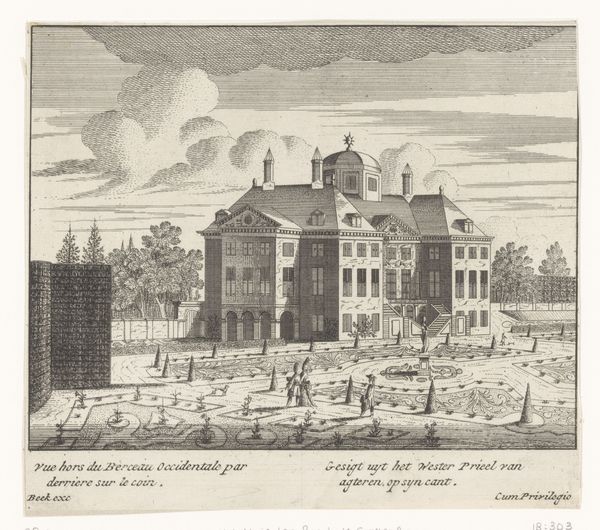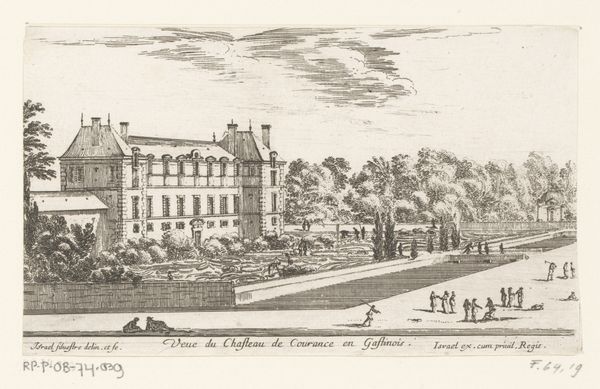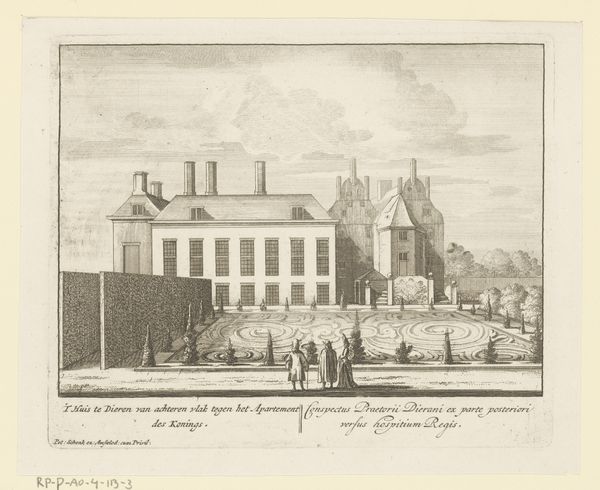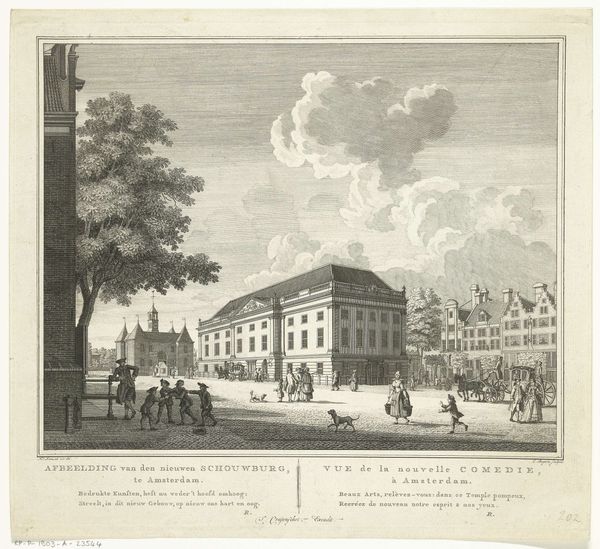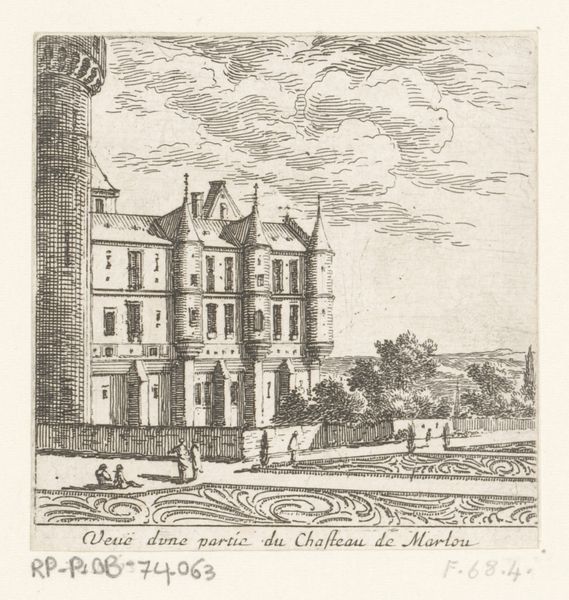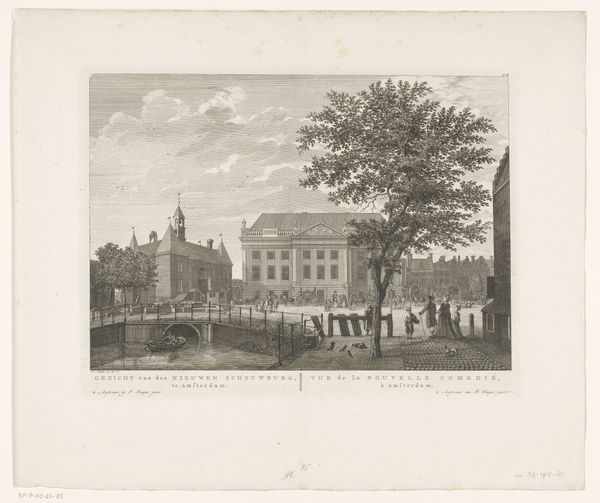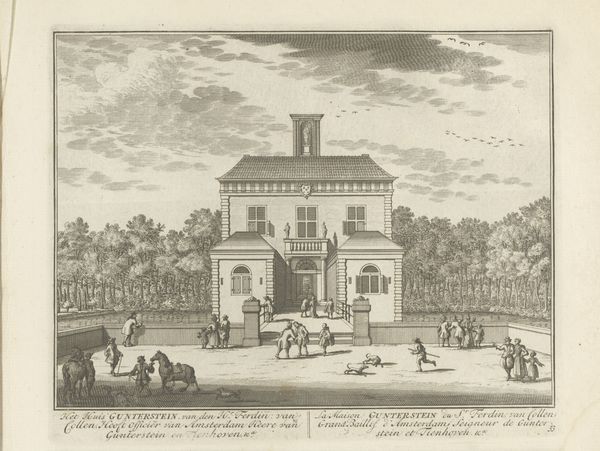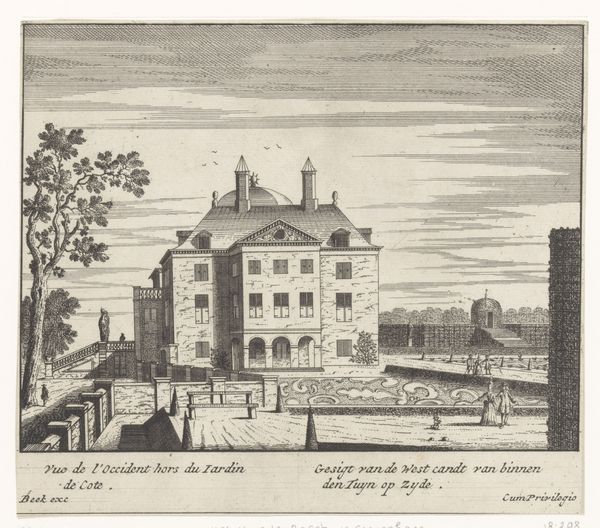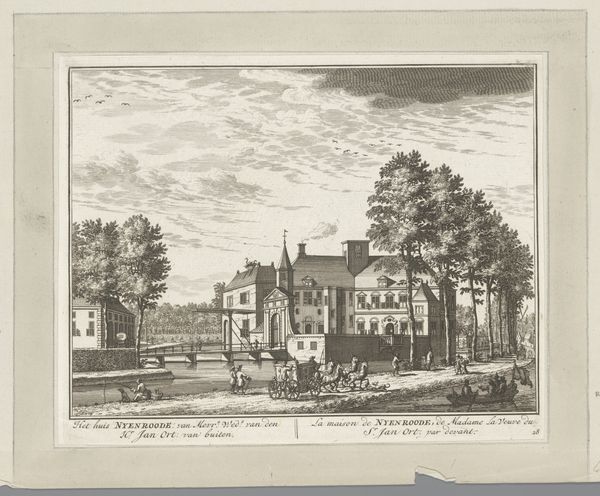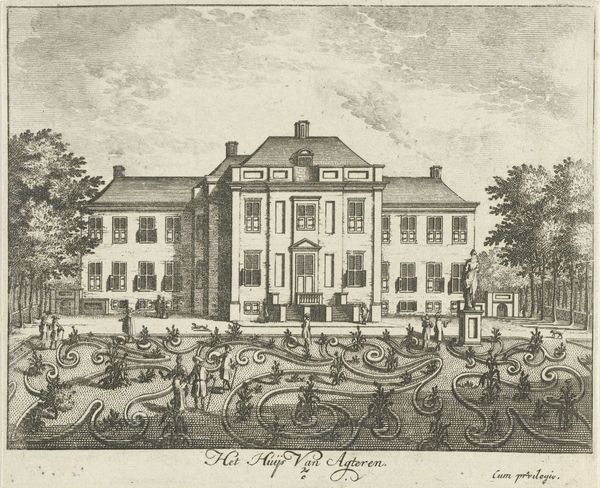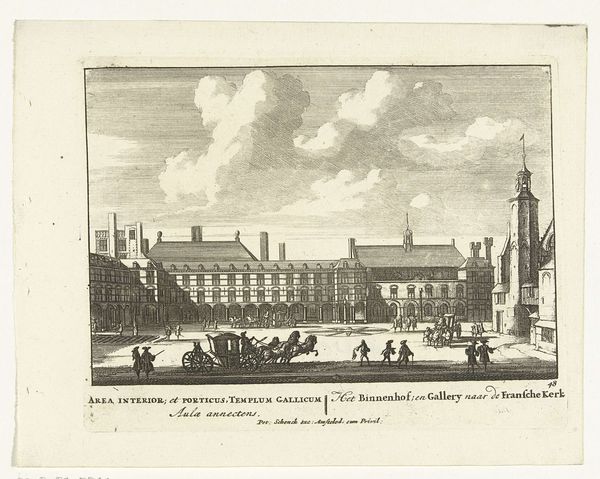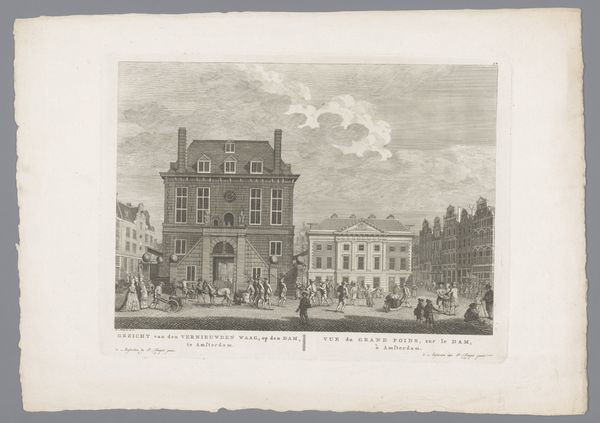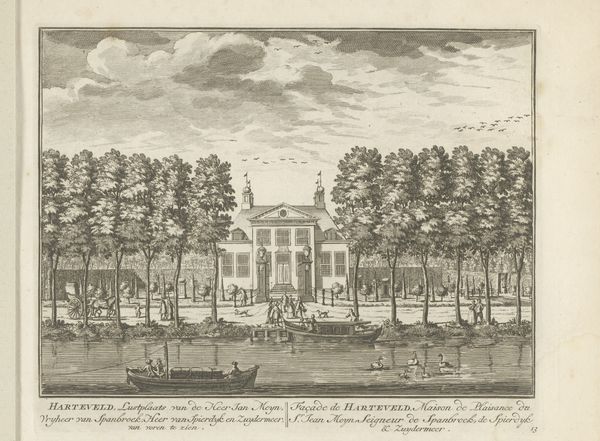
print, engraving, architecture
#
baroque
# print
#
landscape
#
cityscape
#
engraving
#
architecture
Dimensions: height 167 mm, width 198 mm
Copyright: Rijks Museum: Open Domain
Editor: So, this is "Gezicht op Huis Zwanenburg te Halfweg" – that's "View of House Zwanenburg at Halfway" – by Abraham Rademaker, made sometime after 1728. It's an engraving, currently held at the Rijksmuseum. What strikes me is the almost mathematical precision of the lines; the architectural details are so clearly delineated. How do you interpret this work through a Formalist lens? Curator: Indeed, the architectural details are crucial. Note the baroque characteristics such as the symmetry and the emphasis on ornate decoration. Consider the interplay between line and space; Rademaker employs rigorous linearity to define the building's form against the landscape, yet there's also an exploration of depth. How does the engraving's composition guide your eye? Editor: Well, my eye is drawn to the central axis of the building, and then follows the bridge into the background. I think the repetition of vertical lines creates a sense of order. But does that imply something about the engraver’s intention, or the function of the architecture? Curator: Rademaker’s choices in terms of line, composition, and structure serve to emphasize the architecture's monumentality. Do you notice how the surrounding human figures and carriages subtly accentuate the scale and imposing nature of the building? His careful balance in creating a highly structured view offers much insight into both the construction and representation. Editor: So, it's less about the historical context of the house itself, and more about how the artist uses form to create a specific impression? Curator: Precisely. Focus on the visual language the artist employs and how this determines the artwork's significance. Disregard external circumstances in favor of internal dynamics; such are line, form, texture, colour, and composition. What's the work itself, separate from all other issues? Editor: That clarifies things immensely. Thank you. Curator: You're very welcome. Focusing on form reveals a level of deliberate structure in Rademaker’s work I hadn't fully appreciated.
Comments
No comments
Be the first to comment and join the conversation on the ultimate creative platform.
